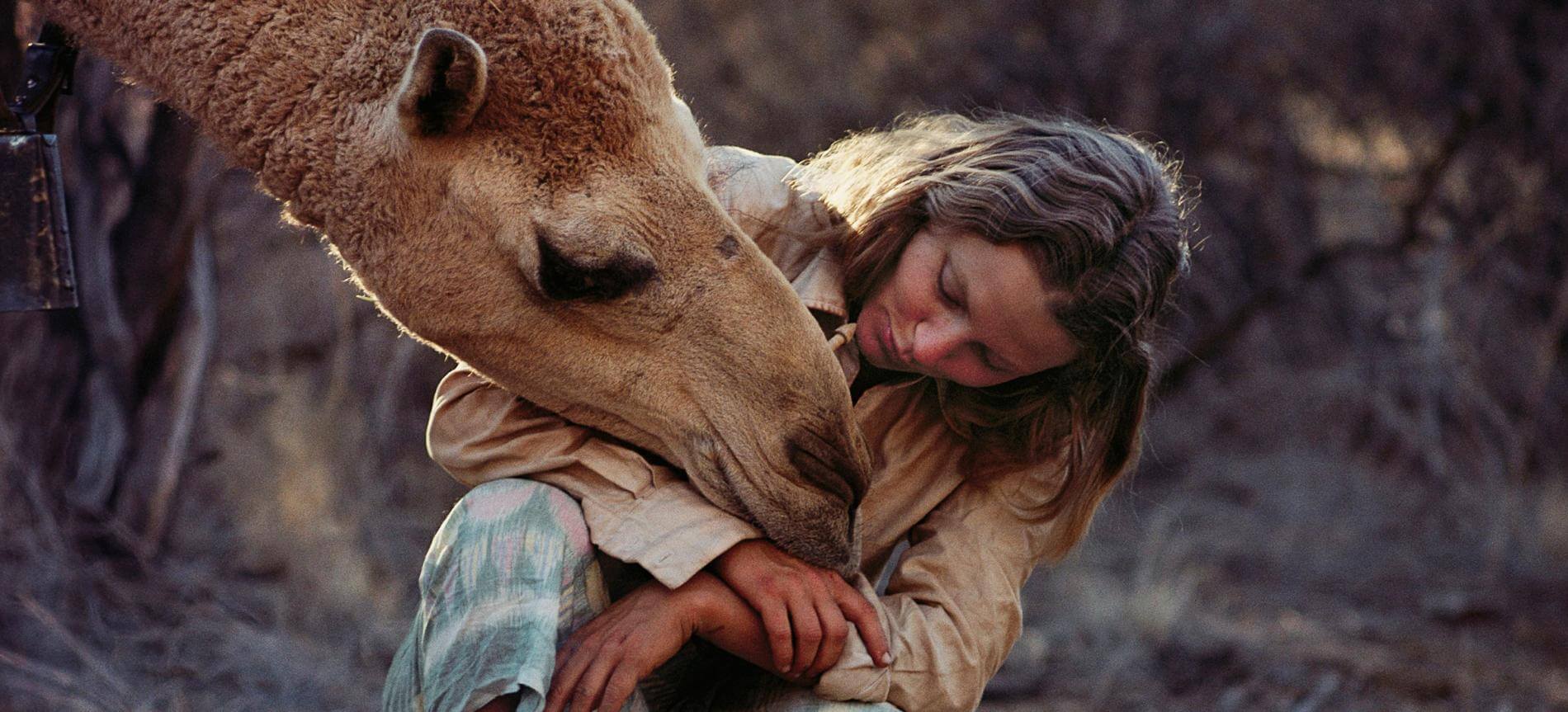This past month, my co-worker Julia and I read a book titled Tracks by Robyn Davidson (DB 18639) for one of our Library’s book clubs. Julia and I fell head over heels for the book: placing holds on all the companion books, hunting down the original article in National Geography, and 3D printing a caravan of camels. Julia wrote a blog post about our group’s reaction to the book which I highly recommend reading. In graceful prose, Julia discusses the likability of the character and how that effects the likability of the story. In further discussion of the book, we both found the character tough and fantastically stoic about her choice to walk across the Australian desert to the Indian Ocean, a total of 1,700 miles with four camels and a dog.
What I found so intriguing about the book was her desire to do this in the first place. When asked, her answer is simple, why not? Robyn Davidson didn’t do this to find fame or have her story told. She simply felt bored with the direction her life was taking and decided to take a long walk through the desert. The only reason her story was told was because she needed money and wrote to National Geographic. Which she wouldn’t have done without the suggestion from a friend of a friend photographer who had previously worked with the magazine. Fate perhaps? Her contempt for the magazine however, was very apparent throughout which I think some found frustrating. I think she just wanted to be true to herself and her story despite needing help to fund it. I understand why she felt so conflicted about using Nat-Geo. Her original desire for this trip was to be completely alone. Having to ask for help must have been incredibly difficult. To me that shows how much drive she had to take this trip and was willing to do anything to take it.
Aside from that, Tracks filled me with a sense of wanderlust I have yet to feel with another book. Something about it made me research all the interviews she had done and read the two coffee table books, with Rick Smolan’s beautiful photographs layered inside. I couldn’t get enough. Maybe what truly astounded me was how despite the fact she was wholly unprepared for this journey, she did it anyway. She learned how to camp, how to train camels, how to eat from the desert (an incomprehensible concept in my opinion) and, maybe most devastatingly, learned how her actions have consequences she may not be fully prepared to handle.
There are many layers to this book that I feel make one read-through not enough. Take her relationship to the Aboriginal groups she stayed with along the way. She wanted to learn from them, learn their language and their desperate love for their land. They taught her how to live and thrive in the desert, a feat only taken by the most unpretentious groups…or the craziest. Consider her relationship to her animals, or her relationship to the desert. Robyn states multiple times her love for the dry hot Australian lands and the feeling of purity it offers. Take her relationship to Rick, the photographer from Nat-Geo. She accidentally met him when she was trying to make money for the trip and then again when she had friends over, and he tagged along. It was his suggestion to write to Nat-Geo that enabled her to take her trip. I say again… perhaps it was fate?
I don’t know what it is about this novel but it will stick in my head as one of my favorites. Maybe her ability to literally pick up and do something completely new is a riveting idea. Maybe the thought of such hard travel is enticing. Or maybe it’s because I’ve never been camping. Whatever reason it is, this book is now a part of my top ten.
“Many times since the trek I have been asked why I made it, and I answer that the trip speaks for itself. But for those who persist I would add these few thoughts. I love the desert and its incomparable sense of space. I enjoy being with Aborigines and learning from them. I like the freedom inherent in being on my own, and I like the growth and learning processes that develop from taking chances. And obviously, camels are the best means of getting across deserts. Obvious. Self-explanatory. Simple. What’s all the fuss about?” -Davidson, Robyn “Alone across the outback” National Geographic May 1978 –

